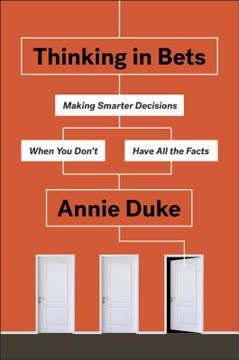Key Takeaways
1. Recognize and overcome resulting bias to improve decision-making
There are only two things that determine how your life turns out: luck and the quality of your decisions. You have control over only one of those two things.
Resulting bias is the tendency to judge a decision based on its outcome rather than the decision-making process itself. This bias can lead to poor learning and future decision-making. To overcome resulting:
- Separate decision quality from outcome quality
- Consider alternative outcomes that could have occurred
- Evaluate decisions based on the information available at the time
- Recognize the role of luck in outcomes
By focusing on the decision-making process rather than just the results, you can improve your ability to make better choices in the future.
2. Combat hindsight bias by tracking knowledge before and after outcomes
Memory creep is the reconstruction of your memory of what you knew that hindsight bias creates.
Hindsight bias distorts our perception of past events, making them seem more predictable than they actually were. To combat this bias:
- Use a Knowledge Tracker to record what you knew before and after a decision
- Distinguish between information available at the time of decision and information revealed later
- Practice identifying instances of hindsight bias in everyday life
- Cultivate empathy for past decision-makers, including yourself
By accurately tracking knowledge and recognizing the limitations of foresight, you can learn more effectively from past experiences and make better decisions in the future.
3. Explore the decision multiverse to understand all possible outcomes
There are more possible futures than the one that actually happens.
The decision multiverse is a mental model that encourages considering all potential outcomes of a decision, not just the one that occurred. To implement this approach:
- Construct simplified decision trees to visualize potential outcomes
- Practice counterfactual thinking by imagining "what if" scenarios
- Evaluate both positive and negative potential outcomes
- Use this perspective to better understand the role of luck in results
By exploring the full range of possible outcomes, you can make more informed decisions and avoid overemphasizing singular results.
4. Use the Three Ps: Preferences, Payoffs, and Probabilities to evaluate decisions
Assessing the quality of a decision involves figuring out whether going for the upside is worth risking the downside.
The Three Ps framework provides a structured approach to decision-making:
- Preferences: Identify your goals and values
- Payoffs: Evaluate potential gains and losses
- Probabilities: Estimate the likelihood of each outcome
To implement this framework:
- Create decision trees that include all three elements
- Practice estimating probabilities, even with limited information
- Consider both short-term and long-term payoffs
- Align decisions with your personal preferences and values
By systematically considering these three factors, you can make more balanced and well-reasoned decisions.
5. Embrace precision in forecasting to make better choices
The bigger the asymmetry between the upside and downside, the more you have to gain when potential losses are limited, and the bigger the freeroll.
Precise forecasting improves decision-making by forcing you to clarify your thoughts and assumptions. To increase precision:
- Convert vague terms (e.g., "likely") into specific probabilities
- Use ranges to express uncertainty in estimates
- Practice the "shock test" to calibrate your confidence
- Seek out information that could change your estimates
By embracing precision, you can:
- Identify areas of uncertainty
- Communicate more clearly with others
- Make more accurate comparisons between options
- Improve your calibration over time
6. Combine inside and outside views for more accurate decision-making
Accuracy lives in the intersection between the outside view and the inside view.
The inside view is based on your personal experiences and beliefs, while the outside view considers broader data and perspectives. To combine these views:
- Start with base rates and general statistics (outside view)
- Adjust based on specific circumstances (inside view)
- Use Perspective Tracking to separate and then integrate both views
- Seek diverse opinions to challenge your assumptions
Benefits of this approach include:
- Reduced overconfidence
- More balanced assessments
- Improved ability to spot personal biases
- Better integration of personal knowledge and external data
7. Break free from analysis paralysis by identifying low-impact decisions
When a decision is hard, that means it's easy.
To overcome analysis paralysis and make decisions more efficiently:
- Use the Happiness Test: Ask if the outcome will significantly affect your happiness in a week, month, or year
- Identify repeating options that allow for future adjustments
- Recognize freerolls with limited downside and potentially high upside
- Apply the Only-Option Test for decisions between similar choices
Strategies for faster decision-making:
- Use the Menu Strategy: Focus on sorting options, not picking between good choices
- Practice quit-to-itiveness: Be willing to change course when necessary
- Consider parallel options to gather more information
By identifying which decisions truly matter, you can allocate your time and mental energy more effectively.
8. Harness the power of negative thinking to achieve goals
Mental pain leads to real-world gains.
Negative thinking, when applied strategically, can improve goal achievement. Techniques include:
- Mental Contrasting: Imagine obstacles to success
- Premortems: Envision potential failures and their causes
- Backcasting: Work backward from imagined success
- The Dr. Evil Game: Identify subtle ways you might sabotage yourself
Benefits of strategic negative thinking:
- Better preparation for potential challenges
- Increased motivation to take preventive action
- More realistic goal-setting and planning
- Improved ability to identify and address weaknesses
By embracing controlled negative thinking, you can paradoxically increase your chances of positive outcomes.
9. Practice decision hygiene to elicit unbiased feedback
Beliefs are contagious.
Decision hygiene involves creating an environment that minimizes the spread of biased information. To practice good decision hygiene:
- Quarantine your opinions when seeking feedback
- Frame questions neutrally to avoid signaling preferences
- Solicit independent feedback before group discussions
- Anonymize feedback in group settings to reduce status effects
- Create checklists of relevant information to provide when seeking advice
Benefits of decision hygiene:
- More diverse and honest feedback
- Reduced groupthink in team settings
- Better access to others' true opinions and knowledge
- Improved ability to spot areas of disagreement or uncertainty
By creating a "clean room" for decision-making, you can gather more accurate information and make better-informed choices.
Last updated:
FAQ
What's How to Decide about?
- Focus on Decision-Making: How to Decide by Annie Duke provides a framework for improving decision-making skills, emphasizing the importance of understanding the decision process rather than just the outcomes.
- Tools and Techniques: The book introduces various tools and techniques to help readers make better choices, including decision trees and the concept of "resulting."
- Learning from Experience: Duke discusses how to learn from past decisions and outcomes, highlighting the biases that can distort our understanding of what makes a good decision.
Why should I read How to Decide by Annie Duke?
- Improve Decision Quality: This book is essential for anyone looking to enhance their decision-making skills, whether in personal or professional contexts. It provides actionable insights that can lead to better outcomes.
- Understand Cognitive Biases: Duke explains common cognitive biases, such as hindsight bias and resulting, which can cloud judgment. Understanding these biases can help you make more informed decisions.
- Practical Framework: The book offers a structured approach to decision-making, making it easier to apply the concepts in real-life situations.
What are the key takeaways of How to Decide by Annie Duke?
- Decision Process Over Outcome: One of the main takeaways is that the quality of a decision should be evaluated based on the decision process, not just the outcome. This helps in learning from experiences without falling into the trap of resulting.
- The Decision Multiverse: Duke introduces the concept of the "decision multiverse," which encourages considering all possible outcomes and their probabilities before making a decision.
- The Three Ps: The book emphasizes the importance of Preferences, Payoffs, and Probabilities in decision-making, guiding readers to assess their choices more effectively.
What is "resulting" in How to Decide by Annie Duke?
- Definition of Resulting: Resulting is described as the tendency to judge the quality of a decision based on its outcome rather than the decision-making process itself. This can lead to misjudgments about what constitutes a good or bad decision.
- Impact on Learning: Duke explains that resulting can distort learning from experience, as people often overlook the role of luck and focus solely on outcomes. This can lead to repeating poor decisions or avoiding good ones based on flawed reasoning.
- Example of Resulting: The book illustrates resulting with examples, such as feeling a decision was good if it led to a positive outcome, regardless of the decision process. This highlights the need to separate decision quality from outcome quality.
How does hindsight bias affect decision-making in How to Decide by Annie Duke?
- Understanding Hindsight Bias: Hindsight bias is the tendency to believe that an event was predictable after it has happened. This can distort our memory of what we knew at the time of the decision.
- Impact on Self-Assessment: Duke discusses how hindsight bias can lead individuals to unfairly judge their past decisions, often blaming themselves for outcomes that were not foreseeable. This can hinder personal growth and learning.
- Mitigating Hindsight Bias: The book suggests using tools like the Knowledge Tracker to help clarify what was known before a decision was made, reducing the influence of hindsight bias on future decision-making.
What are the "Three Ps" in How to Decide by Annie Duke?
- Preferences: Preferences refer to the values and goals that inform how individuals view potential outcomes. Understanding your preferences helps in evaluating which outcomes are desirable.
- Payoffs: Payoffs are the potential gains or losses associated with each outcome. They help in assessing the overall impact of a decision on your goals.
- Probabilities: Probabilities represent the likelihood of each outcome occurring. By estimating probabilities, you can better weigh the risks and benefits of different choices.
How can I apply the decision-making framework from How to Decide by Annie Duke?
- Six Steps to Decision-Making: Duke outlines a six-step process for making better decisions, which includes identifying possible outcomes, assessing preferences, and estimating probabilities. Following these steps can lead to more informed choices.
- Use Decision Trees: The book encourages the use of decision trees to visualize options and outcomes, making it easier to compare different choices. This structured approach helps clarify the decision-making process.
- Practice Perspective Tracking: Duke suggests regularly practicing perspective tracking, which involves considering both the inside and outside views of a situation. This can help identify biases and improve overall decision quality.
What is the "decision multiverse" concept in How to Decide by Annie Duke?
- Definition of Decision Multiverse: The decision multiverse refers to the idea that for any decision, there are multiple possible outcomes, each with its own likelihood. This concept encourages a broader view of potential consequences.
- Importance of Exploring Outcomes: By considering the decision multiverse, individuals can better understand the range of possible futures that could result from their choices. This helps in making more informed decisions.
- Counterfactual Thinking: The book emphasizes the value of counterfactual thinking—imagining alternative outcomes that could have occurred. This practice can enhance learning from past decisions and improve future decision-making.
What is the "Happiness Test" in How to Decide by Annie Duke?
- Assessing Impact: The "Happiness Test" is a method for evaluating whether a decision will significantly affect your happiness over time. It prompts you to consider how the outcome will influence your well-being in the short and long term.
- Low-Impact Decisions: Decisions that pass the Happiness Test are often low-impact, meaning they won't drastically alter your life. Recognizing these decisions allows you to make them quickly without overthinking.
- Practical Application: By applying the Happiness Test, you can prioritize decisions that truly matter and focus your energy on choices that will enhance your overall happiness.
What is "freerolling" and how can it help in decision-making according to How to Decide by Annie Duke?
- Limited Downside: "Freerolling" refers to situations where the potential losses are minimal, but the potential gains are significant. This concept encourages quick decision-making when the downside is limited.
- Identifying Opportunities: By recognizing freeroll situations, you can seize opportunities that may lead to positive outcomes without the fear of substantial loss. This mindset can lead to more proactive decision-making.
- Practical Examples: Duke provides examples, such as applying to a dream college with low application costs, illustrating how freerolling can apply to various life decisions. This encourages readers to take calculated risks.
What is the "Only-Option Test" and how is it used in How to Decide by Annie Duke?
- Evaluating Options: The "Only-Option Test" is a decision-making tool that asks, "If this were the only option I had, would I be happy with it?" This helps clarify whether a choice is genuinely desirable.
- Reducing Analysis Paralysis: By applying this test, you can quickly identify options that meet your criteria, reducing the tendency to overanalyze similar choices. This can lead to faster decision-making.
- Practical Application: The test is particularly useful in situations with multiple close options, allowing you to focus on what truly matters. It encourages a more straightforward approach to decision-making.
What are some common cognitive biases discussed in How to Decide by Annie Duke?
- Confirmation Bias: This bias leads individuals to seek out information that confirms their existing beliefs while ignoring contradictory evidence. It can distort decision-making by reinforcing incorrect assumptions.
- Overconfidence: Overconfidence is the tendency to overestimate one’s abilities or knowledge, which can lead to poor decision-making. Duke highlights the importance of recognizing this bias to improve judgment.
- Availability Bias: This bias occurs when people overestimate the likelihood of events based on how easily they can recall similar instances. It can skew perceptions of risk and influence decisions.
Review Summary
How to Decide receives mostly positive reviews for its practical approach to decision-making. Readers appreciate the actionable advice, exercises, and frameworks provided. Many find the concepts on bias, outcome evaluation, and probability useful. Some criticize the book for being repetitive or lacking depth in certain areas. Overall, reviewers recommend it as a solid introduction to improving decision-making skills, with particular praise for its insights on avoiding common pitfalls and developing a more systematic approach to choices.
Similar Books
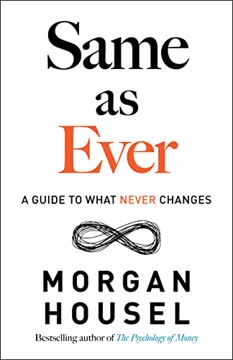

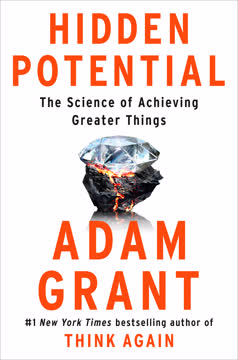
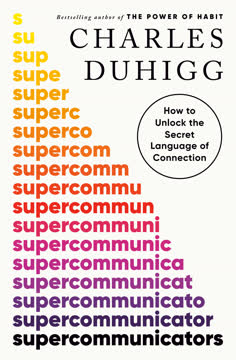
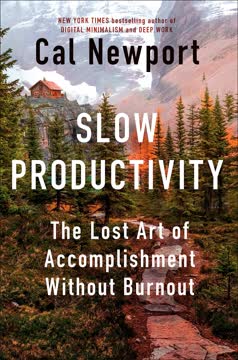

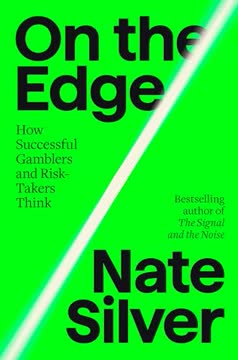
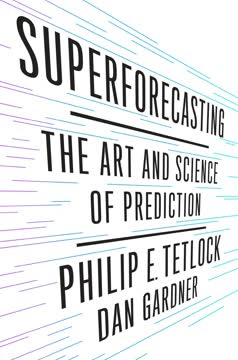


Download PDF
Download EPUB
.epub digital book format is ideal for reading ebooks on phones, tablets, and e-readers.

